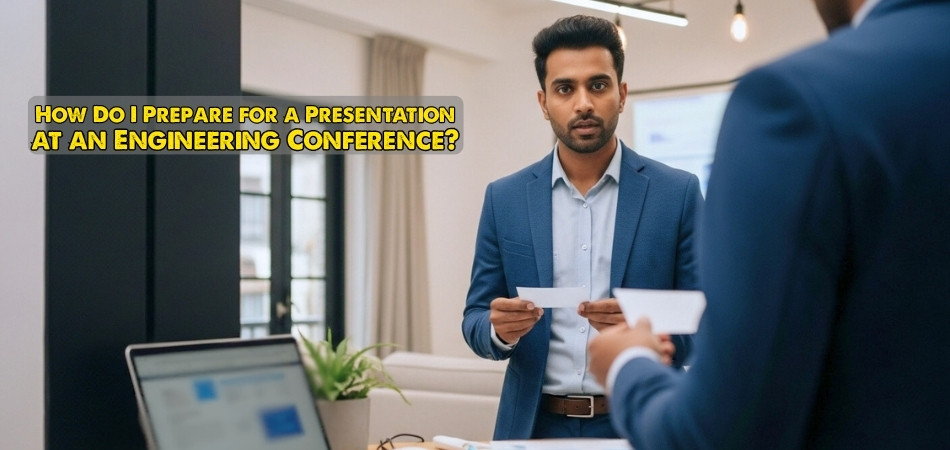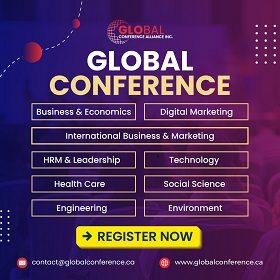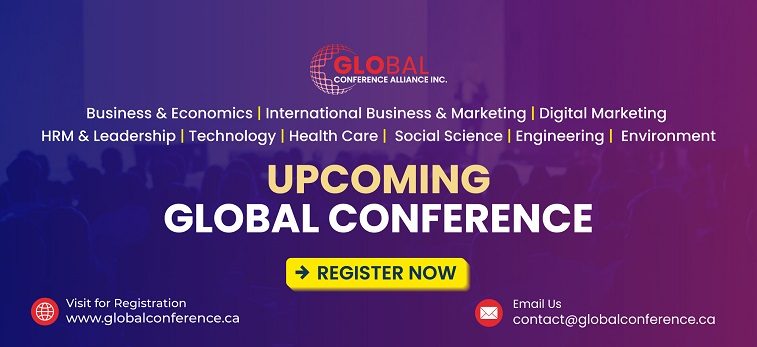Giving a presentation at an engineering conference is a proud moment for many. It’s your chance to share your ideas, show your work, and speak to people who care about the same field. But it’s not always easy to get it just right. You might be wondering how do I prepare for a presentation at an engineering conference.
Prepare for an engineering conference presentation by planning clear content, making simple slides, and practicing aloud. Know your audience, check the technical setup, and speak naturally. Use visuals, stay within time, and start with a strong opening to keep attention focused.
If you’re thinking about giving a strong talk, this article covers everything you need. From slide design and timing to handling questions and using live demos, every part of your presentation matters. Keep reading to learn what to do—and what not to do—for your next big event.
How Do I Prepare for a Presentation at an Engineering Conference?
Getting ready to share your work at an engineering event takes more than just good slides. You need a solid plan, clear points, and confidence. If you’re wondering how to get started, here’s a simple guide to help you prepare well.

Plan Your Content
Start by deciding what you really want your audience to learn. Break your presentation into clear parts: a short intro, the problem, how you solved it, and what your results mean. Think of it like telling a short story. If you’re preparing for international events like conferences in USA, this structure becomes even more helpful because you may be speaking to people from different fields or countries.
Know Your Listeners
Not everyone in the audience will have the same background, so it’s good to keep your language easy and your examples clear. If you’re speaking to industry experts, focus more on results and applications. For academic groups, they might care more about your method. Match your words and tone to who’s listening, and always stick to your time limit so your talk doesn’t feel rushed or too slow.
Make Good Slides
Use slides to support your talk, not tell the whole story. Keep text short and readable. Use large fonts, short phrases, and helpful images or graphs. Don’t fill the slide with too many words or charts—just the basics. One idea per slide works best. When your slides are clear, it helps people focus more on what you’re saying rather than trying to read everything.
Practice Out Loud
Reading your talk quietly isn’t enough. Practice out loud several times so you feel comfortable. You can even record yourself and watch it to catch mistakes or weird pauses. Try to practice with someone who can ask questions at the end, just like what might happen during the real event. This will make you feel more ready and less nervous when it’s time to present.
Check the Setup
Get to the place early on the day of your talk. Test the microphone, check your slides on the computer, and make sure everything works. Stand where you’ll be presenting and get used to the space. Bring backups—like a USB drive and a PDF version of your slides—just in case the main file has a problem. A few minutes of checking can save you from big issues later.
Speak Naturally
You don’t need to memorize every word. Just remember the key points and speak like you’re explaining it to a friend. Look up from your slides, move around a little, and use your hands to explain. Try to smile when it fits and show interest in your own topic. That kind of energy helps the audience pay attention and enjoy your talk more.
Keep People Interested
Start with something that gets attention—a simple story, question, or fun example. Then, keep things moving by speaking clearly and checking in with the audience. Every few minutes, ask a small question or invite people to think about what you said. This makes your talk feel more alive, and people are more likely to remember it.
With the right preparation, giving a talk at an engineering conference can feel exciting instead of scary. Focus on clear ideas, simple slides, and natural speaking. Don’t worry about being perfect—just aim to be clear and honest. A little practice goes a long way in making your presentation memorable.
How to Practice Your Talk for Technical Clarity and Timing?
Getting your technical talk ready takes more than just knowing your topic. You need to speak clearly, stay on time, and feel comfortable. A few small tricks can make a big difference during your talk. Let’s look at how you can practice the right way before your big moment.
Say It Out Loud
Talking through your full presentation helps you feel more confident overall. It shows where things don’t sound right or seem hard to explain. You may notice parts where your words don’t flow smoothly together. Try saying your talk out loud more than once each day. Do this standing up like you would during your real talk. Repeat until you can speak clearly without sounding like you’re reading something.
Watch the Clock
Timing is very important when you’re giving a talk on stage somewhere. You need to make sure you’re not going too fast or too slow. Use a phone or timer each time you practice your full talk. You can even note the time for each section of your slides. This helps you fix anything that takes too long or too little. Repeating this step can help you stay right on time.
Record and Replay
Recording your talk can help you hear how it actually sounds. You might find mistakes or words that don’t sound very clear together. You’ll also catch small habits like saying “um” or “like” too much. Play the video back and make small notes while watching carefully. Try to fix just one or two things after each recording. This makes your talk cleaner and easier for others to follow.
Get Feedback
Asking someone else to watch your practice is a smart step. They can tell you if your message is clear and easy to follow. Friends can also help you see what parts need more fixing. Ask them if your voice was clear and your speed was okay. Don’t feel bad if they give honest advice about your talk. Use their thoughts to improve how you speak and explain ideas.
Stay Fully Prepared
Before the event, it’s smart to check your stuff ahead of time. To stay organized, it’s helpful to review a reliable packing list for engineering conference attendees to make sure you don’t forget essentials like presentation backups, business cards, and adapters. Keeping everything ready means you won’t be stressed before your talk. This way, you can focus more on speaking clearly and staying on time.
Practicing your talk helps you explain ideas clearly to your audience. Try to keep each part simple and easy to understand every time. The more you repeat it, the more comfortable you will become. Just stay calm, be prepared, and speak with clear, steady words.
Should You Include Live Demos or Prototypes in Your Engineering Conference Presentation?
Bringing your project to life during a conference talk can be exciting. Sometimes showing it in action says more than slides ever could. But before deciding to do it live, there are a few things to consider. Let’s look at when a demo works best and when it might not.
Shows Real Results
People often understand better when they can actually see something working. A live demo can clearly show how your robot moves or how your software solves a problem. Instead of just explaining your idea, you let the audience see the outcome. This makes your work feel real and not just a theory. Even a short demo can give your talk a strong and lasting impact.
Risks of Failure
No matter how ready you are, technical problems can still happen any time. The internet might stop working, a wire might come loose, or the device might freeze. If your whole talk depends on the demo, a small issue could mess up everything. Always think about a backup plan or a short video just in case things go wrong while presenting.
Works Better With Video
For some projects, using a short video instead of a live demo is smarter. It lets you show the project clearly without worrying about delays or mistakes. You can record the best version and play it during your talk with ease. This works really well when showing steps in construction, testing, or a software process. Your message stays strong, and the video helps everyone understand.
Keep It Simple
Complex setups can confuse the audience or waste time fixing things. If you do plan a demo, keep it short and clear without too many steps. Make sure everyone can see and understand what’s going on. If used strategically, live demos can be one of the most effective tips for engaging conference audience, especially when demonstrating complex engineering concepts in a tangible way.
Match the Topic
Some presentations fit better with demos than others, depending on the subject. Projects like robots, apps, or machines usually work well with something to show. But if your topic is about design plans or data, a demo may not be needed. Always ask yourself: “Will a demo help them understand better?” If not, it might be better to skip it.
Choosing whether to show a demo depends on your topic and setup. A well-done demo can be exciting, but it must be planned carefully. Think about what helps the audience understand your idea best. Sometimes, simple slides with clear words can do the job just right.
How to Handle Q&A Sessions with Confidence While Presenting at an Engineering Conference?
Answering questions after your presentation might feel scary at first, but it’s a big part of sharing your ideas. It helps people understand your work better and shows that you really know your topic. Let’s see how to handle it the right way.
Practice Common Questions
Before your talk, try to think of the questions people might ask. Think about what was hard to explain or what sounded too technical. Ask a friend to listen and quiz you with possible questions. If you practice answers ahead of time, it won’t feel so hard. Even if someone asks something tricky, you’ll be ready with a clear and simple answer.
Stay Calm and Polite
Sometimes a question might feel tough or even sound a little rude. The best thing to do is to take a breath and stay calm. Listen carefully before you speak, and don’t rush your answer. If you don’t know something, just say that honestly. Being polite and clear shows confidence, even if you don’t have every detail.
Repeat the Question
When someone asks something, it’s a good idea to repeat it before answering. This makes sure everyone else hears it too, and it gives you a few seconds to think. It also shows that you’re paying attention to the person asking. You’ll sound more organized and thoughtful when you respond that way.
Keep Answers Simple
Try not to use big words or long explanations during your answers. Speak clearly and stick to the point so everyone can follow. If someone needs more detail, they’ll ask a follow-up question. Giving short and honest answers helps the audience stay focused and understand your message better.
Invite More Questions
At the end, don’t be afraid to ask if anyone else has questions. You can even smile and say something like, “I’d be happy to answer more.” This shows that you’re open and friendly, and people will feel more comfortable speaking up. It also gives you a chance to connect with your audience a bit more.
Handling Q&A sessions doesn’t have to be stressful or scary at all. With a little practice and a calm attitude, you’ll feel more ready. Just take your time, stay friendly, and speak with care. That’s all it takes to answer with confidence.
Mistakes to Avoid in Engineering Conference Presentations
Speaking at an engineering conference can be a big moment for many people. Even if your topic is strong, small mistakes can make it hard to understand. Sometimes it’s not what you say, but how you say it. To help your talk go smoothly, here are some key things to avoid.
- Avoid using big, confusing words that most people might not understand easily. Simple words help more people follow your ideas clearly and quickly.
- Don’t read straight from your slides like a script the whole time. It sounds boring and makes people stop paying attention to you.
- Make sure your talk fits into the time limit given by the event. Talking too long or rushing at the end feels messy and unclear.
- Don’t fill your slides with too much text or lots of tiny details. The audience won’t be able to read and listen at the same time.
- Never turn your back on the audience while reading your slides aloud. Always face the crowd and speak like you’re talking to them.
- Don’t ignore the audience or speak without making any eye contact. Looking at people helps keep them interested in what you’re saying.
- Avoid rushing through your slides just to finish everything. People need time to understand each idea before moving to the next one.
- Don’t forget to explain technical terms if they’re not common words. Clear explanations make sure everyone can understand your presentation easily.
- Avoid standing still or looking too stiff while you speak. Use small hand movements or walk a little to look more natural and confident.
- Don’t skip practicing your talk before the actual day of the event. Practice helps fix mistakes and makes your speech sound smoother and better.
Even great ideas can be missed if the presentation is full of mistakes. Clear speaking and simple slides help your audience stay focused. Practice often and check your timing to stay on track. A little effort in the right places makes your talk much stronger.
Frequently Asked Questions
Preparing for a big presentation doesn’t end with making slides and practicing. There are many small details that can affect how your talk goes. Some things may seem unimportant, but can really make a difference. These FAQs cover helpful tips that many people often forget.
How Should I Dress for the Conference?
Dress neatly and comfortably so you look confident and professional. A simple shirt with a jacket or clean formal wear usually works well. Avoid clothes with loud designs or too many colors. Always wear something that helps you feel relaxed while still looking smart.
What Should I Bring With Me?
Bring your laptop, a USB drive with your slides, and printed notes. It’s also smart to carry water, pens, and a small notebook. Keep a phone charger or power bank just in case. Having these things with you helps you feel ready for anything.
Can I Use Handouts During My Talk?
Yes, you can use handouts if they help explain your topic better. Keep them short, clear, and easy to read. Only give them out if they truly add value to your talk. Don’t hand out too many papers that might distract people from listening.
What Should I Do If I Make a Mistake?
If you make a mistake, don’t panic or stop talking. Pause, take a breath, and continue like nothing big happened. Most people won’t even notice unless you draw attention to it. Just stay calm and focus on the next point.
How Can I Calm My Nerves Before Presenting?
You can calm nerves by taking deep breaths and staying away from negative thoughts. Practice your talk a few times before going on stage. Remind yourself that you know your topic well. Talking slowly and smiling can also help you relax.
Is It Okay to Use Humor in My Presentation?
Yes, light humor can make your talk more fun and memorable. But don’t overdo it or use jokes that may confuse people. Try something simple like a funny picture or a light comment. Just make sure it fits your topic and feels natural.
What If The Audience Looks Bored?
If people look bored, try changing your voice tone or asking a small question. You can also tell a short story or share a fun fact. These little changes can grab attention again. Don’t let it upset you—just stay focused and try your best.
Can I Walk Around While Speaking?
Yes, moving a little while speaking helps you look more confident. Walk slowly and avoid pacing too much or turning your back. Use hand movements to explain points clearly. It shows energy and helps keep the audience interested.
Bottom Line
Giving a presentation at an engineering conference takes more than just sharing facts. It’s about keeping your audience interested, explaining your work clearly, and showing confidence on stage. With good planning and smart practice, you can avoid common mistakes and give a strong and memorable talk.
If you’ve been asking yourself, how do I prepare for a presentation at an engineering conference, the answer is simple: plan your content well, speak clearly, use easy slides, and practice until you feel ready. Being prepared helps you stay calm and confident while sharing your work with others who care about your topic.
Before your big day, review your setup, pack everything you need, and get some rest. Speak naturally, smile when it fits, and be open to questions. Trust your hard work and enjoy the moment. Best of luck with your presentation—you’ve got this!







